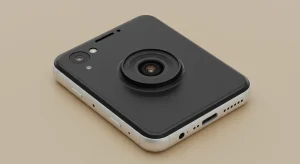The smartphone industry is continuing to evolve at lightning pace. Despite new technology such as VR threatening to disrupt the landscape, there’s a good chance that smartphones will live on. After all, they’re integral to several key online industries.
:max_bytes(150000):strip_icc()/GettyImages-1036256804-6f03495f031246a6b1d86daa43df73ee.jpg)
The main question is, what could the next major advancements on smartphones involve? There is already speculation that neural integration could come in and allow people to control their devices with their thoughts.
Key Industries Highlight How Smartphones Are Going Nowhere
Some analysts have speculated that with the advent of futuristic technology like virtual reality, smartphones could soon fade into obsoletion. However, this is unlikely to be the case, as many of the internet’s leading industries rely on them.
The online casino industry, for example, blew up alongside smartphones in the 2010s. Most people who play online roulette for real cash now do so from a mobile device, and developers have geared their offerings towards the portable screen. This is highlighted by games like Gold Vault Roulette and Lightning Roulette First Person, which expand to fit the screen and create an immersive experience.
There’s also a thriving app market on mobile with more than 2.7 million apps in the Google Play Store. With most of the world’s major companies offering mobile apps, it seems highly unlikely that smartphones will disappear. Instead, the devices could undergo new developments to make them even better.
What Is Neural Integration?
Neural integration is one of the next potentially world changing technologies, and Elon Musk’s Neuralink is at the forefront of research in the field. The device has already moved onto human trials, meaning that there’s a real possibility that it could come to fruition.
Neural integration with smartphones would involve connecting the device directly to the user’s neural network. This connection could be achieved using advanced neurotechnology that interprets brain signals, and then translates them into commands for the smartphone. Imagine composing a text message simply by thinking about it or navigating through apps with a mere thought – this would be an incredible leap forward in the user experience and one that many people would jump on the chance to try.
What are the Potential Benefits of Neural Integration?
There are countless potential benefits that would come with neural integration on smartphones, with accessibility being the most obvious one. There’s no doubt that this would be a game changer for users with mobility or speech impairments and would offer them a new realm of independence and interaction.
Neural integration could also do wonders for efficiency and productivity. Imagine how much work you could get done if you didn’t have to use your hands and could run multiple smartphone functions at the same time with your brain.
Research in neurotechnology and brain-computer interfaces is rapidly advancing, and this brings the possibility of smartphone neural integration closer to reality. It could be that we are standing on the brink of a new era for smartphones, in which they become integral to the first stage of mainstream brain chips in humans.






